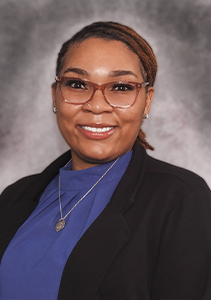Data reveal the deep challenge that Illinois, hospitals and insurance networks face to help many of the enrollees get their health under control and, in turn, hold down costs
New data released in May offer the first look at the health, habits and demographics of about 100,000 new enrollees in Cook County’s expanded Medicaid program under the Affordable Care Act.
The picture it paints is bleak.
More than half the new patients covered by Cook County’s Medicaid expansion program haven’t seen a doctor in the past 12 months.
Eighty-five percent of them are unable to obtain needed medications.
Nearly one-fourth have spent time in a hospital in the past six months and an additional 1 in 5 are worried about finding a place to stay in the near future.
They suffer from heart disease, high cholesterol, diabetes, obesity and asthma.
Many of them smoke.
The data, shared with the Tribune by Cook County Health, cover enrollees from when CountyCare launched in early 2013 through April 2014. And they reveal the deep challenge that the state, hospitals and insurance networks face to help many of these patients get their health under control and, in turn, hold down costs.
“What stands out to me is, this cohort of patients are the chronically ill who have been out of the system and really needed care,” said Dr. Lee Francis, chief executive of the Erie Family Health Center, one of the state’s largest networks of community health clinics that serves a predominantly poor group of patients. “These are the people who should be going to the doctor, and now maybe they will. It’s a huge step.”
Before the implementation of the federal health law, Illinois’ Medicaid program covered only a narrow band of low-income people, including children, mothers and a category of high-cost patients traditionally called the aged, blind and disabled.
But starting in early 2013, Cook County was given a jump-start from the federal government to begin enrolling early all adults who made less than about $15,000 a year. The Medicaid expansion, which Illinois and at least 25 other states opted to implement under the health law, went into effect Jan. 1.
The health conditions reported by this first batch of new enrollees in CountyCare “are the diseases of poverty,” said Steven Glass, executive director of managed care at Cook County Health and Hospitals. “These are people who live in communities who don’t have easy access to healthy food or safe ways to exercise. All those things impact health.”
Improving the health of this long-underserved band of the population is a key tenet of the health law, often called Obamacare, which aims to hold down health care spending by better managing how, when and where health treatments are delivered.
Although the federal government is paying 100 percent for these patients for the first three years under the expansion, the burden will begin to shift to Illinois in 2017, when the federal government’s share of the costs drops to 95 percent. Starting in 2020, Illinois will be responsible for paying 10 percent.
Insurers, health clinics and hospital systems also have a stake in better controlling the health of these new Medicaid patients.
All Medicaid patients who gained coverage under the expansion will be moved into so-called managed care programs, in which providers eventually will be paid a flat rate per patient instead of by service provided.
Some will be run by insurers like Blue Cross and Blue Shield of Illinois, others will be managed by networks of hospitals and health systems that banded together to create new health plans.
This initiative amounts to a giant transfer of financial risk from the government to insurance companies and health care providers. In exchange for assuming that risk, those companies get to keep a portion of any savings they’re able to generate by keeping patients healthier and out of the hospital.
CountyCare, one of the state’s largest managed care programs, is the lone entity to release detailed health and claims data on its Medicaid expansion applicants and members. It also faces perhaps the biggest challenge in controlling the health of its members, who experts say are likely to be among the sickest in the state.
“You tend to see a sicker population in the first wave because you’ve got people with significant health care needs who were waiting for this,” said Judy Solomon, vice president for health policy at the Center on Budget and Policy Priorities, a nonprofit group that advocates for the poor.
Mike Koetting, deputy director for planning and reform implementation at the Illinois Department of Healthcare and Family Services, said he expects the Cook County population to be “a little sicker than the average” person who gained Medicaid coverage under the expansion, because of a variety of factors.
Statewide, about 330,000 have enrolled in the expanded Medicaid program through the end of May, blowing away initial state estimates of about 200,000 for all of 2014, Koetting said.
Nearly one-third of them are in CountyCare.
Read the full article at Chicago Tribune.


